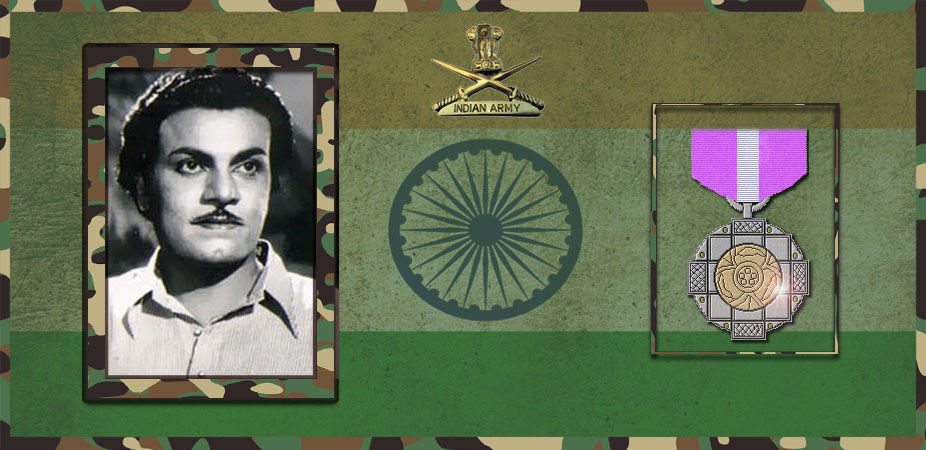Let's salute to our Indian Army together, We are proud to be Indian.
Let's salute to our Indian Army together, We are proud to be Indian.

Subramaniam Srinivasan (4 January 1904 – 26 August 1969), popularly known by his screen name S. S. Vasan, was an Indian journalist, writer, advertiser, film producer, director and business tycoon. He is the founder of the Tamil-language magazine Ananda Vikatan and the film production company Gemini Studios, Gemini Film Laboratories and Gemini Picture Circuit. He was a member of parliament (Rajya Sabha) from 1964 and served his term till his death.
Vasan was born in Thiruthuraipoondi in the then Tanjore district but was forced to migrate to Madras following the death of his father at an early age. Vasan discontinued his studies before graduation and set up a flourishing mail order and advertising business. In 1928, Vasan purchased a struggling Tamil magazine Ananda Vikatan that was published by Pudhoor Vaidyanadhaiyar since February 1926 and has stopped publication in December 1927. Vasan bought the publication in January 1928 and relaunched it with the same name but in a different format from February 1928. Ananda Vikatan, subsequently, emerged as the leading Tamil magazine in the then Madras Presidency and continues to be the oldest and most respected Tamil magazine till this day.
Vasan entered the Tamil film industry in 1936 when his novel Sathi Leelavathi was made into a film. In 1940, he purchased the Motion Picture Producers Combine, a film studio and renamed it Gemini Studios. Gemini Studios made a number of successful Tamil, Telugu and Hindi movies from 1940 to 1969, notable ones being Mangamma Sapatham, “Aboorva Sagotharargal, “Nandanaar”, “Bala Nagamma”, Miss Malini, Chandralekha, Vanjikkottai Valiban, “Nishaan”, “Mangala”, “Insaaniyat”, “Grahasti”, “Gharana”, “Zindagi”, “Vazhkai Padagu”, “Motor Sundaram Pillai”, “Olivilakku”, “Chakradhari”, “Aurat”, “Avvaiyar”, “Paigham” and Irumbu Thirai. Vasan also directed some of his later movies, the first being Chandralekha, which is considered by critics and film historians to be a milestone in Indian cinema. Vasan died in Madras on 26 August 1969, at the age of 65.
Vasan was an accomplished writer and translator and a hugely successful journalist. As a director, Vasan was known for his grandiose sets and innovative techniques that he introduced. Film historian Randor Guy hailed Vasan as the “Cecil B. De Mille of India”.
He was the first film and media personality to be invited to be a member of parliament in India’s Rajya Sabha where he advocated the granting of industry status to the film trade (a battle still being fought). He was one of the founders of Film Federation India, Producer’s Guild of India and the South Indian Film Chamber of Commerce. He was awarded the Padma Bhushan in 1969, the year of his death, by the government of India for his extraordinary contribution to Indian media.The Government of India and the Postal department released postage stamps bearing his likeness on 26 August 2004, the year of his centenary.
Vasan was born in the town of Thiruthuraipoondi in the Tanjore district into a poor family. While his official date of birth is listed as 10 March 1903, according to his family, he was born on 4 January 1904. Film historian Randor Guy suggested that Vasan’s date of birth may have been deliberately fabricated to help in his school admission.Vasan’s father died when he was two years old and his mother Balambal went to live with her father in Thiruthiraipoondi from the village of Narimanam where her husband’s family lived and raised her son as well as her own siblings.
She was a scholar of Sanskrit and would tutor children and people in the village in addition to making special confectionaries for festive occasions – this was how she supported her ailing widowed father, toddler son and her siblings closer to her son’s age. She inspired ambition and strength in her son and to fulfill her desire, he came to Madras in 1917 to study in Pachaiyappa’s College. While in College, he would hawk watches and goods on the railway platforms to send back money to his family in the village. He also simultaneously started writing articles for local magazines, translating foreign novels into Tamil and publishing them as well as started one of the first mail order businesses in India. An example of an advertisement of that time would read “Send Rs 1 and receive 32 imported articles” – these would consist of various trinkets and things from England like even bobby pins, but was wildly successful across the state. This made him successful enough to bring his family from the village and at which time he got married to the dynamic Pattamal Vasan who was a huge support and reason for his continued path of success.
Due to pressure from his mother and the fact he was now married, he applied for a clerk’s job with the Madras and South Mahratta Railway but could not save enough money for the safety deposit required due to extraneous circumstances. It was a blessing in disguise because if this had happened, it could have cut short the success of this media baron in later years. It was at this time that his success in advertising drew attention from other local businesses and prompted him to begin an Ad agency, one of the first in India run by an Indian.